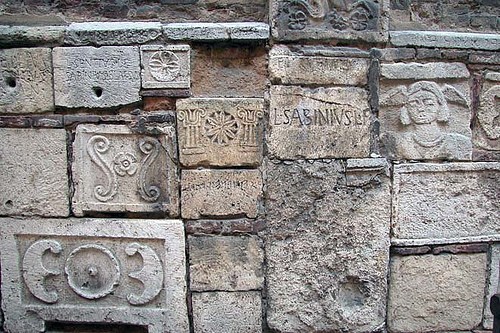Time and location: online, MTWRF 12:30 to 1:45
Description
Late Antiquity is a period in history that has attracted much attention recently. In part, that is because of an old, 19th-century preoccupation with demarcating the clear chronological boundaries between Antiquity and the Middle Ages. An older generation of historians used to believe that once the Western Roman Empire disappeared in 476, the medieval world began. By now, scholarly opinions have shifted towards the model of a “transformation of the Roman world,” gradually leading to a new type of society, with different values and rules. Since that transformation took a long time, from ca. 300 to ca. 600, a new name was chosen to describe that period—Late Antiquity—to cover the history of the Old World “between Marcus Aurelius to Muhammad,” as Peter Brown put it half-a-century ago in the subtitle of his famous book (the title of which was the inspiration for the subtitle of this course). The course consists of a survey of all aspects of the transformation, from political developments in the Late Roman Empire to the economic and social changes, both inside and outside the empire that marked Late Antiquity. Particular emphasis will be placed on the role of religion, especially the rise of Christianity, and the fundamental innovations in art and architecture epitomized by the great church of Hagia Sophia in Constantinople.
Textbooks
- Stephen Mitchell. A History of the Later Roman Empire, AD 284-641. 2nd edition. Malden: Wiley Blackwell, 2015 [hereafter Mitchell, available as e-book through the University of Florida library]
- Michael Maas. Readings in Late Antiquity. A Sourcebook. 2nd edition. Abingdon/New York: Routledge, 2010 [hereafter Maas, on two-hour reserve in Library West]
Assignments and grading policies
There is no attendance policy, but you are responsible for attending all lectures and reading the required texts. Class participation may be taken into account to determine the overall grade. The basis for evaluation of performance will be four quizzes and two exams (Midterm and Final). The unannounced quizzes are exclusively based on primary source readings from your Maas book and will consist only of multiple-choice questions (no essay). A careful study of these texts is necessary for a good performance at the quiz. The Midterm and Final exams will cover everything from lectures and readings. Both Midterm and Final will consist of two parts: an identification and/or multiple-choice part, and a short essay, in which you will be asked to synthesize your knowledge of the topic, dropping in facts to show that you understand the concrete aspects of that topic. Only the Midterm will be cumulative. In other words, the Final examination will cover only the material since the Midterm examination. Make-up Midterm and Final exam will be given for very serious reasons, in which case you will have to produce some official proof. There is no make-up for quizzes. Extra-credit work will be accepted only for students with active participation in class discussions. The format of the extra-credit option shall be discussed with the instructor during regular office hours. The following point system will be used in determining the final grade:
Quizzes: 40 points
Midterm: 30 points
Final exam: 30 points
Total: 100 points
The following scale will be used in determining your final grade.
| Points | Grade |
| 97-100 | A |
| 93-96 | A- |
| 88-92 | B+ |
| 81-87 | B |
| 75-80 | B- |
| 68-74 | C+ |
| 61-67 | C |
| 55-60 | C- |
| 48-54 | D+ |
| 41-47 | D |
| 35-40 | D- |
| under 30 | E |
